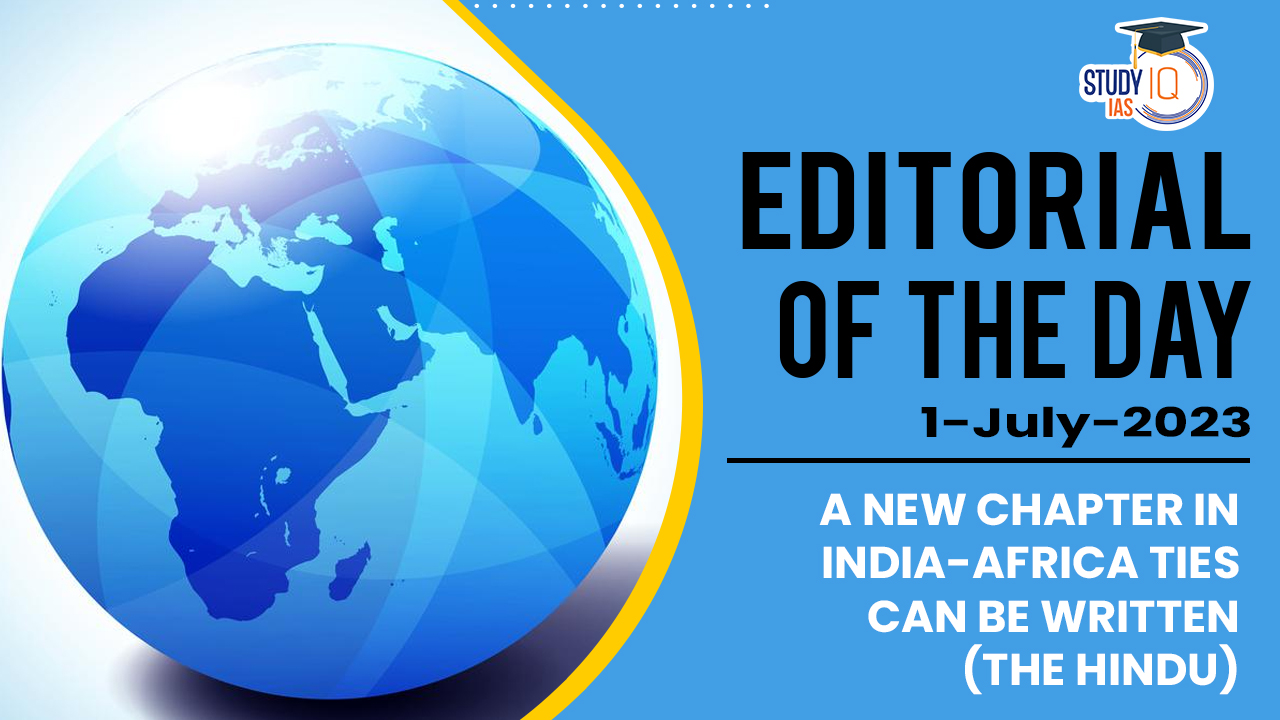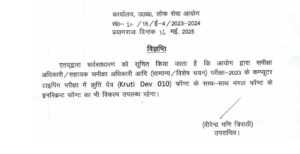Table of Contents
Context: The article discusses the importance of studying Africa closely due to its growing population that currently accounts for 17% of the world population and the link between India’s rise as a global player and its partnership with Africa. The article refers to a report titled “India-Africa Partnership: Achievements, Challenges and Roadmap 2023,” presented by the Africa Expert Group (AEG) established by the Vivekananda International Foundation which discusses the trajectory of India-Africa Relations. The article emphasizes the need to focus on Africa’s significant population and its projected growth, which is estimated to reach 25% of the world’s population by 2050. It highlights that by closely studying Africa and enhancing the partnership between India and the continent, both India and Africa can benefit. The article goes on to suggest that India’s engagement with Africa can contribute to its global ambitions, and in turn, Africa can leverage India’s resources, expertise, and investment for its own development.
Background
India-Africa Ties:
Evolution of Ties:
- Historical Ties: India and Africa have a long history of interaction, primarily through trade routes connecting the Indian Ocean region and the East African coast. This historical connection forms the basis of cultural and people-to-people ties that continue to influence contemporary relations.
- Decolonization and South-South Cooperation: Following the wave of decolonization in Africa during the mid-20th century, India played a significant role in supporting African nations’ struggles for independence. India’s own experience of colonial rule resonated with African nations, leading to the establishment of strong diplomatic and political ties. India’s leaders, such as Mahatma Gandhi and Jawaharlal Nehru, played a crucial role in fostering solidarity and cooperation between India and Africa.
- Non-Aligned Movement (NAM): Both India and many African countries were founding members of the Non-Aligned Movement, which emerged during the Cold War era. NAM aimed to provide a platform for countries to maintain neutrality and pursue their own development agendas, free from the influence of major power blocs. This common alignment fostered cooperation and diplomatic engagements between India and Africa.
Areas of Cooperation:
Cooperation between India and Africa spans across various areas, driven by shared interests, historical ties, and the recognition of mutual benefits.
- Economic Cooperation:
- Trade and Investment: India has been one of the major investors in Africa, with investments in sectors such as telecommunications, energy, infrastructure, agriculture, and manufacturing. Both sides aim to enhance bilateral trade and diversify their economic ties.
- Energy Security: India seeks to secure its energy supplies by partnering with African countries in the oil and gas sector. This includes long-term contracts for oil and gas imports and collaboration in renewable energy projects.
- Agriculture and Food Security: India looks to leverage Africa’s ample agricultural land to address its own food security concerns. There is potential for cooperation in areas such as agricultural research, technology transfer, and capacity building.
- Mining and Mineral Resources: African countries, rich in mineral resources, have historic ties with India in this sector. India’s industries rely on African resources like iron, copper, aluminium, and zinc.
- Development Cooperation:
- Capacity Building and Human Resource Development: India offers scholarships, training programs, and technical assistance to African countries to enhance their human resource capabilities in sectors such as healthcare, education, information technology, and agriculture.
- Infrastructure Development: India supports infrastructure projects in Africa through aid and concessional loans. These projects focus on areas such as transportation, power generation, telecommunications, and water management.
- Health and Pharmaceuticals: India provides medical expertise, pharmaceuticals, and affordable healthcare solutions to African countries. This includes partnerships in research and development, manufacturing, and supply of essential medicines.
- Political and Diplomatic Cooperation:
- UN and International Forums: India and African countries collaborate and support each other on various international platforms, including the United Nations, to address common challenges and promote shared interests.
- Peacekeeping and Security: India has been actively involved in UN peacekeeping operations in African countries, contributing troops and sharing its expertise in capacity building, training, and conflict resolution.
- Climate Change and Sustainable Development: India and Africa cooperate in addressing climate change, promoting sustainable development, and implementing global agreements such as the Paris Agreement. They advocate for the concerns of developing and least developed countries in international climate conferences.
- Cultural and People-to-People Exchanges:
- Soft Power and Cultural Exchange: India’s soft power, including its diverse culture, traditional medicine, and yoga, plays a significant role in building bridges and strengthening ties with African countries.
- Indian Diaspora: The presence of the Indian diaspora in several African countries acts as a bridge between the two regions, facilitating cultural understanding, economic collaboration, and people-to-people connections.
Regional Groupings and Forums for India-Africa Relations
- India-Africa Forum Summit (IAFS): The IAFS is a major platform for India-Africa cooperation. It is a summit-level meeting held periodically to enhance and strengthen the partnership between India and African countries. The first IAFS was held in 2008 in New Delhi, and subsequent summits have been held in Africa.
- BRICS (Brazil, Russia, India, China, South Africa): India and Africa engage through the BRICS platform, which is a grouping of five major emerging economies. BRICS provides opportunities for economic cooperation, trade, and investment between India and African countries.
- Asia-Africa Growth Corridor (AAGC): The AAGC is an economic cooperation agreement between India and Japan aimed at promoting socio-economic development in Asia and Africa. It focuses on infrastructure development, digital connectivity, and capacity building in African countries.
- International Solar Alliance (ISA): The ISA is an initiative launched by India and France to promote solar energy deployment globally. It provides a platform for collaboration and technology transfer in the field of solar energy, including for African countries.
- India-Africa Science and Technology Initiative (IASTI): The IASTI is an initiative that promotes cooperation between India and African countries in the field of science and technology. It includes various programs and activities to support research and capacity building in science and technology.
- Regional Economic Communities (RECs): Africa has several RECs, such as the Economic Community of West African States (ECOWAS), Southern African Development Community (SADC), East African Community (EAC), and others. India engages with these regional groupings to promote trade, investment, and cooperation in various sectors.
Decoding the Editorial
The article discusses the report titled “India-Africa Partnership: Achievements, Challenges and Roadmap 2023. The report highlights the steady development of India-Africa relations over the past 15 years, with notable progress since 2014.
Key Observations of the Report:
- Transition in Africa:
- The report explores the ongoing transitions taking place in Africa across various aspects including demographics, economy, politics, and society.
- Despite being impacted by the challenges of the pandemic and complex geopolitics, Africa is poised for transformation.
- It is gradually moving towards regional integration and remains committed to democracy, peace, and progress.
- Insurgency:
- However, countries like Ethiopia, Sudan, and the Central African Republic continue to grapple with insurgency, ethnic violence, and terrorism.
- External Partnerships:
- Adding to this landscape, there is intensifying competition among several external partners, including China, Russia, the United States, the European Union, Japan, Türkiye, and the United Arab Emirates.
- These countries seek to strengthen their ties with different parts of Africa in order to secure market access, energy and mineral resources, and enhance their political and economic influence.
- China’s Relations:
- China, in particular, stands out as Africa’s major economic partner, with a consistent and robust policy since 2000.
- An essay in the report aptly describes China’s roles as an infrastructure developer, resource provider, and financier, highlighting its significant investments in Africa through financial resources, materials, and diplomatic efforts.
- India-Africa Ties:
- The report also acknowledges that India has a substantial partnership with Africa and enjoys a wealth of goodwill.
- However, it emphasizes the importance for India to periodically review its Africa policy, adapt to changing circumstances, and maintain a focused approach to its implementation.
- This means making necessary adjustments, staying resilient, and prioritizing specific areas to effectively engage with Africa.
- By doing so, India can strengthen its partnership and contribute to Africa’s development.
Recommendations of the Report for enhanced Ties: The report provides a set of nearly 60 policy recommendations under the framework of “Roadmap 2030” to deepen and diversify the India-Africa partnership. These recommendations cover four main areas:
Political and Diplomatic Cooperation:
- Restore periodic leaders’ summits through the India-Africa Forum Summit.
- Launch an annual strategic dialogue between the chairperson of the African Union (AU) and India’s External Affairs Minister.
- Seek consensus among G-20 members on the AU’s entry as a full member.
- Appoint a secretary exclusively in charge of African affairs within the Ministry of External Affairs (MEA) to enhance policy implementation.
Defence and Security Cooperation:
- Increase the number of defence attachés deployed in Africa.
- Expand dialogue on defence issues and widen collaboration in the maritime domain.
- Expand lines of credit to facilitate defence exports.
- Enhance cooperation in counter-terrorism, cyber security, and emerging technologies.
Economic and Development Cooperation:
- Ensure access to finance through the creation of an Africa Growth Fund (AGF).
- Implement a special package of measures to improve project exports and strengthen cooperation in the shipping sector.
- Promote trilateral cooperation and deepen science and technology collaboration.
- Focus on increasing India-Africa trade and economic ties.
Socio-cultural Cooperation:
- Increase interaction between universities, think tanks, civil society, and media organizations in India and select African countries.
- Establish a National Centre for African Studies.
- Name Indian Technical and Economic Cooperation (ITEC) and Indian Council for Cultural Relations (ICCR) scholarships awarded to Africans after famous African figures.
- Liberalize visa measures for African students coming to India for higher education and provide short-term work visas.
In addition, the report suggests the establishment of a special mechanism for implementing the “Roadmap 2030” through close collaboration between the MEA and the National Security Council Secretariat. This mechanism would involve a team of officials working under the joint leadership of the Secretary, Africa in the MEA, and a designated Deputy National Security Adviser.
Beyond the Editorial
Challenges in India-Africa Relations:
- Competition with China: China has established a significant presence in Africa, particularly in sectors like infrastructure, mining, and energy. India faces competition from China in terms of investment, trade, and influence in Africa.
- Limited Resources: India’s resources for providing financial assistance and infrastructure development in Africa are comparatively limited. India cannot match China’s vast financial capabilities, which can result in challenges in competing for major projects and trade opportunities.
- Investment Concerns: Indian firms may be hesitant to invest in Africa due to concerns about slower economic growth, high levels of debt, and uncertainties in some African countries’ business environments. These factors can limit India’s ability to expand its economic footprint in the continent.
- Lack of Connectivity: Adequate city-to-city connectivity between India and Africa is lacking, hindering people-to-people contact and impeding the growth of mutual understanding and cooperation.
- Perception and Image: India needs to address concerns among African citizens who view Indian investments as neo-colonialism or exploitative. Incidents of racial attacks on African nationals in India have damaged India’s image and could potentially strain relations.
- Implementation Challenges: India faces challenges in terms of slow delivery and low disbursement rates of commitments made to African countries. The reliance on multilateral agencies for project implementation sometimes leads to India not receiving proper credit for its contributions.
- Different Priorities: India’s focus on Africa is not its primary foreign policy priority, as it also engages with other major powers like the United States, the European Union, and neighboring countries. Balancing multiple priorities can pose challenges in effectively pursuing India-Africa relations.


 UPPSC RO ARO Exam Date 2025 Out: Typing ...
UPPSC RO ARO Exam Date 2025 Out: Typing ...
 Maharashtra Bill to Curb Urban Naxalism,...
Maharashtra Bill to Curb Urban Naxalism,...
 International Maize and Wheat Improvemen...
International Maize and Wheat Improvemen...





















